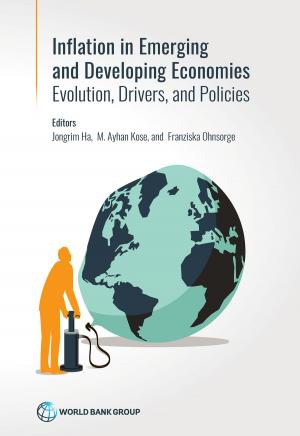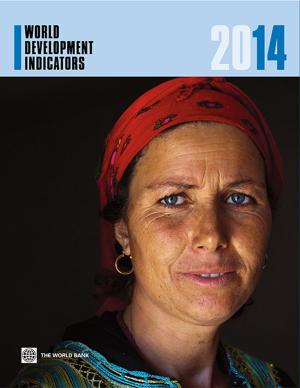Global Monitoring Report 2012: Food Prices, Nutrition, and the Millennium Development Goals
Nonfiction, Health & Well Being, Medical, Reference, Health Policy, Public Health, Business & Finance, Economics, Economic Development| Author: | World Bank, International Monetary Fund | ISBN: | 9780821395233 |
| Publisher: | World Bank Publications | Publication: | April 24, 2012 |
| Imprint: | Language: | English |
| Author: | World Bank, International Monetary Fund |
| ISBN: | 9780821395233 |
| Publisher: | World Bank Publications |
| Publication: | April 24, 2012 |
| Imprint: | |
| Language: | English |
What has been the impact of yet another food price spike on developing countries’ ability to make progress toward the Millennium Development Goals (MDGs)? How many poor people have been prevented from lifting themselves out of poverty? How many people, and how many children, have seen their personal growth and development permanently harmed because their families could not afford to buy food? Finally, what can countries do to respond to higher and more volatile food prices? Global Monitoring Report 2012: Food Prices, Nutrition, and the Millennium Development Goals examines these questions. It summarizes the effects of food prices on several MDGs, stressing that recent food price spikes have prevented millions of households from escaping extreme poverty. The report advocates using agricultural policy to orchestrate a supply response; deploying social safety nets to improve resilience; strengthening nutritional policy to manage the implications of early childhood development; and implementing trade policy to improve access to food markets, reduce volatility, and induce productivity gains. The report acknowledges that one size does not fit all and that the sequencing and prioritization of various policy initiatives depend critically on the initial situation a country or region finds itself in. It also discusses support by the international community. The world has met two global MDG targets well before the 2015 deadline. Estimates based on preliminary surveys indicate that the share of people living in extreme poverty in 2010 was half what it was in 1990. The world has also halved the share of people with no safe drinking water. The goal of gender parity in primary and secondary education is on track to be met in 2015, and the goal of ensuring that children everywhere—boys and girls alike—are able to complete primary school is nearly on track. But the MDGs closely linked to food and nutrition, particularly those that aim to reduce child and maternal mortality, are lagging. Global Monitoring Report 2012 was prepared jointly by the World Bank and the International Monetary Fund, with consultations and collaborations with regional development banks and other multilateral partners.
What has been the impact of yet another food price spike on developing countries’ ability to make progress toward the Millennium Development Goals (MDGs)? How many poor people have been prevented from lifting themselves out of poverty? How many people, and how many children, have seen their personal growth and development permanently harmed because their families could not afford to buy food? Finally, what can countries do to respond to higher and more volatile food prices? Global Monitoring Report 2012: Food Prices, Nutrition, and the Millennium Development Goals examines these questions. It summarizes the effects of food prices on several MDGs, stressing that recent food price spikes have prevented millions of households from escaping extreme poverty. The report advocates using agricultural policy to orchestrate a supply response; deploying social safety nets to improve resilience; strengthening nutritional policy to manage the implications of early childhood development; and implementing trade policy to improve access to food markets, reduce volatility, and induce productivity gains. The report acknowledges that one size does not fit all and that the sequencing and prioritization of various policy initiatives depend critically on the initial situation a country or region finds itself in. It also discusses support by the international community. The world has met two global MDG targets well before the 2015 deadline. Estimates based on preliminary surveys indicate that the share of people living in extreme poverty in 2010 was half what it was in 1990. The world has also halved the share of people with no safe drinking water. The goal of gender parity in primary and secondary education is on track to be met in 2015, and the goal of ensuring that children everywhere—boys and girls alike—are able to complete primary school is nearly on track. But the MDGs closely linked to food and nutrition, particularly those that aim to reduce child and maternal mortality, are lagging. Global Monitoring Report 2012 was prepared jointly by the World Bank and the International Monetary Fund, with consultations and collaborations with regional development banks and other multilateral partners.















